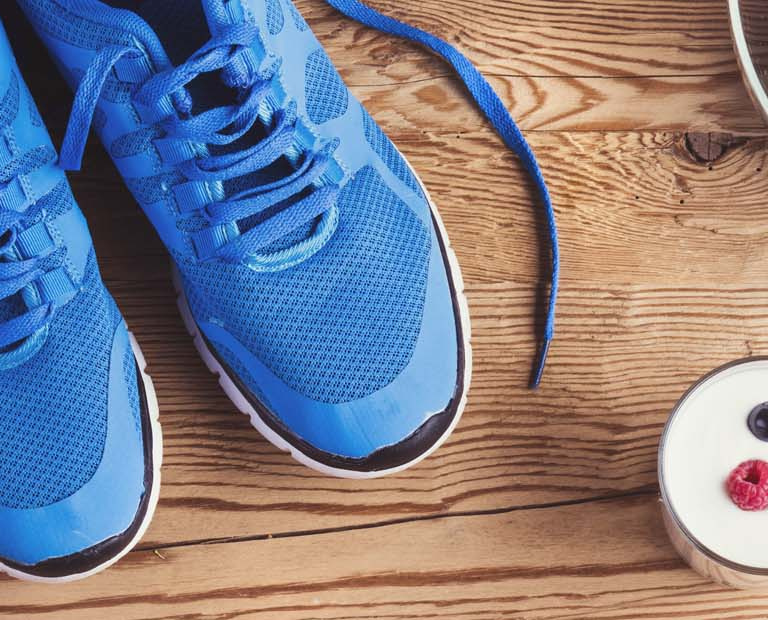Doing Desserts the Healthier Way
4 minute readDiet and nutrition is an essential consideration in any fitness plan. Unfortunately the word ‘diet’ is too often associated with self-control and sacrifice resulting in personal eating goals that almost inevitably lead to failure. The ‘feast and fast’ pattern that can emerge from these unrealistic expectations can not only thwart even the most fervent gym-goers goals but can also have serious health implications ranging from obesity to diabetes.
Achievability must be at the core of any plan. If it is not reasonable to expect someone to give up their weekly (or daily!) sugar fix, it may be possible to replace it with a healthier alternative that is more inline with their fitness goals. Over time, these healthier choices will become habitual leading to long-term, sustainable healthy eating that breaks the yo-yo diet mold.
To help on the journey towards the ultimate goal of habitual healthy eating, we have compiled some of the best advice on how to satisfy that sweet tooth with healthier options.
Behaviour Modification
- Eating out can be one of the trickiest situations for those trying to change their eating patterns and avoiding these social situations will only reaffirm the association of healthy eating with sacrifice and hardship. Instead, have strategies in place such as offering to share a dessert between two or more people to reduce portion size. Try to avoid anything with high levels of saturated fat such as rich, creamy desserts, dense puddings or full-fat ice cream and opt for fruit-based desserts instead.
- Have healthy dessert options available at home. This requires advance planning, but if there is low-fat frozen yoghurt ready to go in the freezer, there will be less temptation to take a late-night trip to supermarket in search of a full-fat tub of icecream. Accept that it is ok to want the occasional treat and incorporate this into the weekly shop to ensure the options at hand healthy ones.
- Don’t sweat the slip ups. Failure is a part of life and if that rich, chocolate dessert was just too good to resist, accept it and move on. It’s not an excuse to give up!
- Do not make certain certain foods off-limits. Again, this reinforces the concept that having a healthy diet is all about giving up the things you enjoy and banning certain foods only makes them seem more desirable. Rather than cutting foods out completely, try to limit portion sizes. One way to do this is to buy the best quality available, usually leading to lower consumption.
Ingredient Alternatives
- When baking muffins and cakes, there are many standard ingredients which can be replaced with healthier alternatives. Replacements for white flour include pureed black beans, ground almonds, wholemeal flour, rice flour, quinoa flour and nut flours. Another advantage to these ingredients is that some are also a good source of protein. Alternatives to sugar are apple puree, vanilla extract, stevia and pureed prunes. Alternative ingredients to baking with butter include avocado and banana.
- Rather than having cream or ice cream with dessert which are high in fat, replace these with low-fat custard, low-fat natural yogurt, coconut or almond milk. Sorbet is another excellent ice cream alternative.
- The best and healthiest dessert is of course, a bowl of fresh fruit salad. If this seems a little boring, you can dress the salad to make it more interesting. Some topping ideas include: crushed meringue, greek yogurt, citrus juice, honey, agave syrup, mint leaves, oat crumble or nuts. Another take on a plain fruit salad is to roast stone fruits which intensifies their sweetness.
Snacking
- Have small healthy snacks which you can eat during the day such as protein balls, fruit leather, grapes, dried fruit and health bars (check the packaging for the sugar and fat content as not all bars are as healthy as they seem). Having a couple of small snacks throughout the day may prevent cravings later on.
- When selecting chocolate, go for dark chocolate with at least 70% cocoa as this has less fat and sugar than dairy milk chocolate.
- Satisfy cravings with smoothies or freshly squeezed juices. These are packed with vitamins and fresh fruit makes them sweet enough without adding sugar. If a sweeter taste is required, add honey or agave nectar instead of sugar.
Fitness professionals or aspiring fitness professionals interested in learning more about offering nutritional advice to their clients should look at the Level 3 Nutrition for Physical Activity, a national qualification covering healthy eating guidelines, measures of energy, micronutrients and the digestive system.
Back to articlesSubscribe to our newsletter
Step inside the world of health and fitness
Great news, you're on the list...

